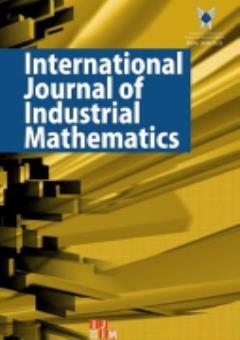Using Data Envelopment Analysis-Discriminant Analysis for predicting the congestion
محورهای موضوعی : مجله بین المللی ریاضیات صنعتی
Sarah Navidi
1
,
M. Rostamy Malkhalifeh
2
![]() ,
G. Tohidi
3
,
mohammad nHassa Behzadi
4
,
G. Tohidi
3
,
mohammad nHassa Behzadi
4
1 - Department of Mathematics, Science and Research Branch, Islamic Azad University, Tehran, Iran
2 - Department of Mathematics, Science and Research Branch, Islamic Azad University, Tehran, Iran.
3 - Department of Mathematics, College of Science, Central Tehran Branch, Islamic Azad University, Tehran, Iran.
4 - Department of Statistics, Science and Research Branch, Islamic Azad University, Tehran, Iran.
کلید واژه: Data Envelopment Analysis, Discriminant Analysis, Congestion, Classification, Decision Making Unit,
چکیده مقاله :
Two of the essential and important topics of scholars' research are congestion and classification in Data Envelopment Analysis. There are lots of papers that researchers represented their methods in these fields separately. Assume that there is a different method that can predict the congestion of Decision Making Units. In this paper, we represented our method that predicts the congestion of DMUs instead of calculating their congestion. The advantage of this method is for the time that measured the congestion of DMUs but we need to add new DMUs and we do not want to calculate the congestion of all DMUs again. For this reason, we define available DMUs into three groups such as DMUs with strong congestion, DMUs with weak congestion, and DMUs with no congestion; then predict the congestion of new DMU. In the last section, we represent the numerical example of our purpose method. The result shows that the prediction of congestion is so correct.
Two of the essential and important topics of scholars' research are congestion and classification in Data Envelopment Analysis. There are lots of papers that researchers represented their methods in these fields separately. Assume that there is a different method that can predict the congestion of Decision Making Units. In this paper, we represented our method that predicts the congestion of DMUs instead of calculating their congestion. The advantage of this method is for the time that measured the congestion of DMUs but we need to add new DMUs and we do not want to calculate the congestion of all DMUs again. For this reason, we define available DMUs into three groups such as DMUs with strong congestion, DMUs with weak congestion, and DMUs with no congestion; then predict the congestion of new DMU. In the last section, we represent the numerical example of our purpose method. The result shows that the prediction of congestion is so correct.


